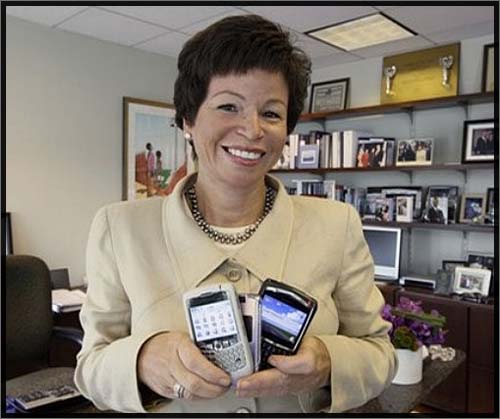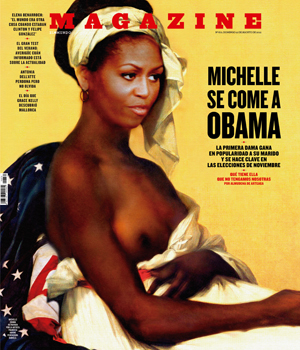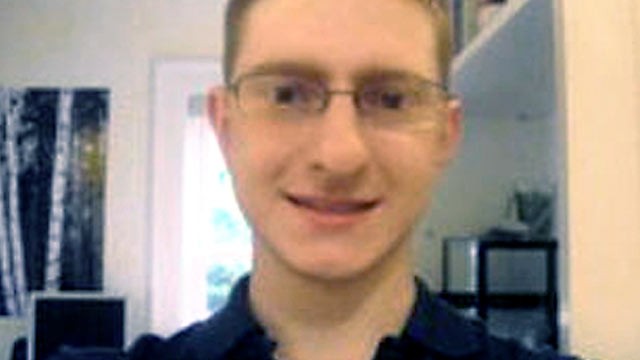So, The New York Times ran one of those lengthy news features the other day that set out to penetrate the walls of Barack Obama’s White House and show readers what is really happening on the inside, in the halls of power that are the center of all that is important in the universe.
In other words, “The Other Power in the West Wing” is a story that’s about politics, politics and more politics.
But there’s a problem.
You see, everywhere you turn in this story — a massive take-out about Valerie Jarrett, a key Chicago insider and Obama friend who has moved inside the Beltway — religious issues keep showing up. This starts at the very beginning, with the mysterious political story that continues to divide Democrats in this city. This is long but essential:
WASHINGTON — President Obama was in a bind, and his chief of staff could not figure out how he had ended up there.
Leaders of the Roman Catholic Church were up in arms last fall over a proposal to require employers to provide health insurance that covered birth control. But caving in to the church’s demands for a broad exemption in the name of religious liberty would pit the president against a crucial constituency, women’s groups, who saw the coverage as basic preventive care.
Worried about the political and legal implications, the chief of staff, William M. Daley, reached out to the proposal’s author, Kathleen Sebelius, the health and human services secretary. How, he wondered, had the White House been put in this situation with so little presidential input? “You are way out there on a limb on this,” he recalls telling her.
“It was then made clear to me that, no, there were senior White House officials who had been involved and supported this,” said Mr. Daley, who left his post early this year.
What he did not realize was that while he was trying to put out what he considered a fire, the person fanning the flames was sitting just one flight up from him: Valerie Jarrett, the Obamas’ first friend, the proposal’s chief patron and a tenacious White House operator who would ultimately outmaneuver not only Mr. Daley but also the vice president in her effort to include the broadest possible contraception coverage in the administration’s health care overhaul.
So, as everyone knows, there were centrist Democrats who were pleading for change on this issue, for some kind of real compromise with Catholics, evangelical Protestants, Orthodox Jews, Muslims (as opposed to the Times and its Catholics-only approach) affected by this controversial mandate. However, Jarrett stood in the way. She was too close, too inside, to out maneuver.
So who is Jarrett?
Later in the story, readers are told:
Ms. Jarrett often serves as a counterweight to the more centrist Clinton veterans in the administration, reminding them and her innately cautious boss that he came to Washington to do big things. Some of his boldest moves, on women’s issues, gay rights and immigration, have been in areas she cares about most. If Karl Rove was known as George W. Bush’s political brain, Ms. Jarrett is Mr. Obama’s spine. …
But she has also steered him toward controversy, as in the contraception debate. And some of Mr. Obama’s most senior advisers worry — perhaps not entirely without jealousy — that her direct access to the president has at times led to half-baked decision making and unclear lines of authority. …
She is the only staff member who regularly follows the president home from the West Wing to the residence, a practice that has earned her the nickname “the Night Stalker.” By day, Mr. Obama is “Mr. President” to her, but in social settings, he is just “Barack.” When the Obamas take an out-of-town break, she often goes along.
What readers are hearing, of course, is the sound of jealousy.
This is the sound of jealousy inside the White House itself, the voices of Democrats who resent this powerful woman’s close ties to the Obamas. But this raises the same question: If Jarrett is who she is because of what she believes, then what does she believe? This is especially crucial since, while the story mentions some economic issues, it is clear that the heart of her power is linked to cultural, moral and religious issues.
Later in the feature, there is this highly symbolic showdown with a major figure on the religious left:
Ms. Jarrett was … “livid,” one former White House official said, with members of the Congressional Black Caucus who accused the president of paying insufficient attention to the particular economic woes of blacks. When the writer and academic Cornel West joined in, calling Mr. Obama the “black mascot of Wall Street,” Ms. Jarrett’s response was “ruthless,” Dr. West said. He recalled a phone call in which she dismissed his criticism as sour grapes for not receiving a ticket to the inauguration, and said he later heard from friends that she was putting out the word that “one, I was crazy, and two, I was un-American.”
“It was a matter of letting me know that I was, in her view, way out of line and that I needed to get in line,” he said in an interview. “I conveyed to her: ‘I’m not that kind of Negro. I’m a Jesus-loving black man who tells the truth, in the White House, in the crack house or in any other house.’ She got real quiet. It was clear that she was not used to being spoken to that way.”
I could go on and on. The bottom line, however, is clear: Everywhere readers turn in this story, they run into moral, cultural and religious issues.
This is true everywhere EXCEPT in the reporting about Jarrett herself.
So I will ask: Would it help to know something about the religious views of this all-powerful insider, since she seems so passionate about so many issues that have a religious component?
Just asking. Maybe there is nothing there at all. If true, that would — itself — be crucial information.
Just saying.














